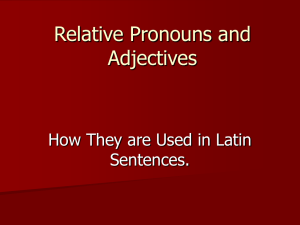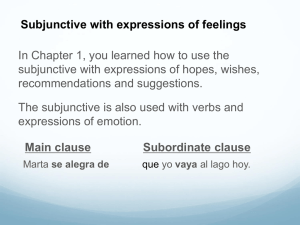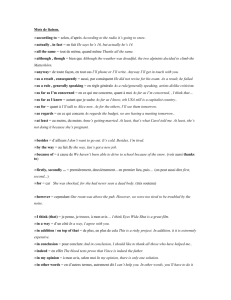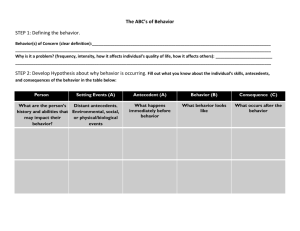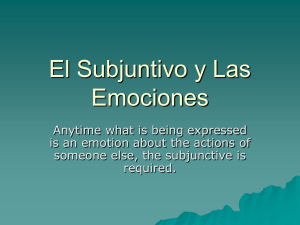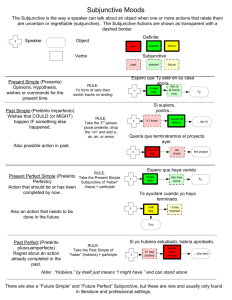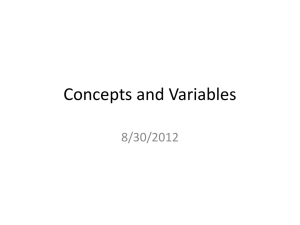The Subjunctive in Adjectival Clauses
advertisement
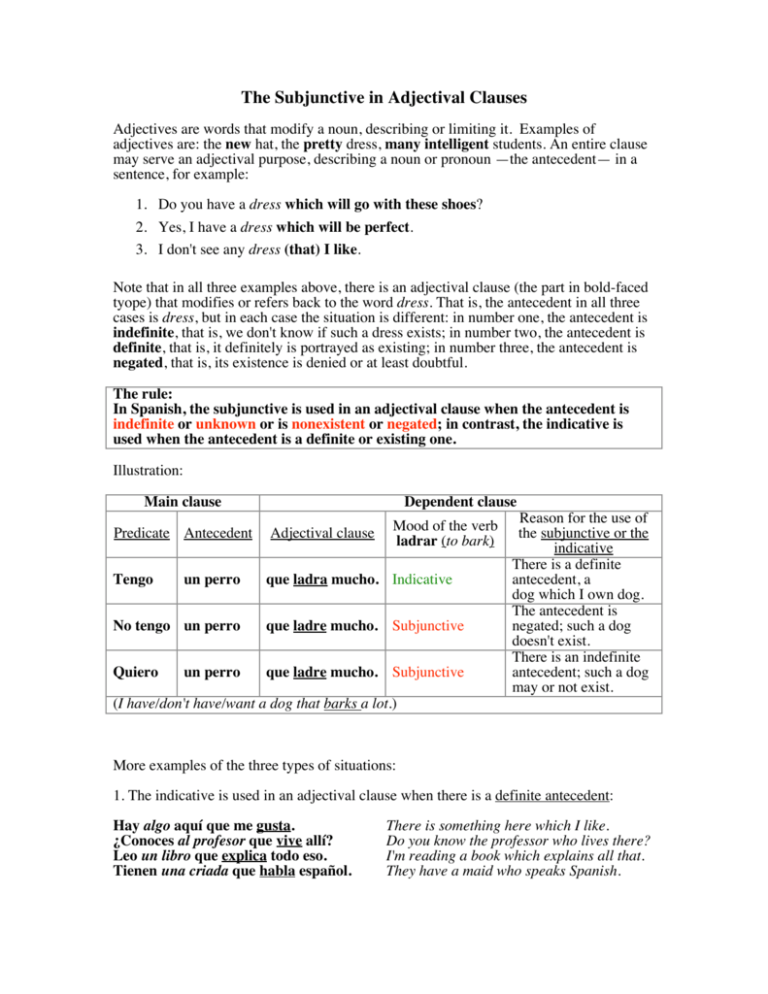
The Subjunctive in Adjectival Clauses Adjectives are words that modify a noun, describing or limiting it. Examples of adjectives are: the new hat, the pretty dress, many intelligent students. An entire clause may serve an adjectival purpose, describing a noun or pronoun —the antecedent— in a sentence, for example: 1. Do you have a dress which will go with these shoes? 2. Yes, I have a dress which will be perfect. 3. I don't see any dress (that) I like. Note that in all three examples above, there is an adjectival clause (the part in bold-faced tyope) that modifies or refers back to the word dress. That is, the antecedent in all three cases is dress, but in each case the situation is different: in number one, the antecedent is indefinite, that is, we don't know if such a dress exists; in number two, the antecedent is definite, that is, it definitely is portrayed as existing; in number three, the antecedent is negated, that is, its existence is denied or at least doubtful. The rule: In Spanish, the subjunctive is used in an adjectival clause when the antecedent is indefinite or unknown or is nonexistent or negated; in contrast, the indicative is used when the antecedent is a definite or existing one. Illustration: Main clause Dependent clause Mood of the verb ladrar (to bark) Predicate Antecedent Adjectival clause Tengo que ladra mucho. Indicative un perro No tengo un perro que ladre mucho. Subjunctive Quiero que ladre mucho. Subjunctive un perro Reason for the use of the s ubjunctive or the indicative There is a definite antecedent, a dog which I own dog. The antecedent is negated; such a dog doesn't exist. There is an indefinite antecedent; such a dog may or not exist. (I have/don't have/want a dog that barks a lot.) More examples of the three types of situations: 1. The indicative is used in an adjectival clause when there is a definite antecedent: Hay algo aquí que me gusta. ¿Conoces al profesor que vive allí? Leo un libro que explica todo eso. Tienen una criada que habla español. There is something here which I like. Do you know the professor who lives there? I'm reading a book which explains all that. They have a maid who speaks Spanish. 2. The subjunctive is used in an adjectival clause when antecedent is negated: No hay nada aquí que me guste. No veo a* nadie que conozca. No recomendamos ningún libro que él haya escrito. There is nothing here I like. I don't see anyone I know. We don't recommend any book he has written. 3. The subjunctive is used in an adjectival clause when there is an indefinite antecedent: ¿Hay algo aquí que te guste? Quiero leer un libro que explique todo eso. Conoces a* alguien que viva cerca de aquí? Buscamos una criada que hable español. Is there anything here you like? I want to read a book which explains all that. Do you know anyone who lives nearby? We're looking a maid who speak Spanish. [We hope we can find one!] *Note the use of the personal a before the pronouns alguien and nadie when used as direct objects.
